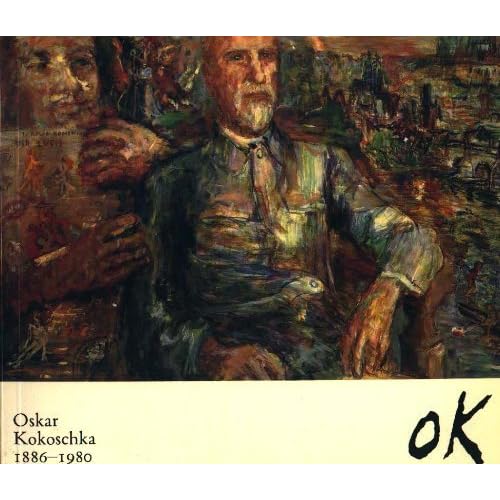Oskar Kokoschka 1886-1980
Category: Books
Oskar Kokoschka 1886-1980 Details

Reviews
I saw this book in the library of the Solomon R. Guggenheim Museum in New York. I was impressed with the large number of color illustrations of the works of Oskar Kokoschka in a single book. There are 184 plates, all of which are in color, and includes oil paintings, watercolors, drawings and a few prints. Also included is an essay of just the correct length and direction. The essay by Richard Calvocoressi is a great summary of the career of this outstanding artist and the extensive Chronology by Katharina Schulz is of such detail that it allows the reader to track Kokoschka year by year, country by country, and painting by painting. Calvocoressi's essay is also organized around each grouping of art.The works begin with Kokoschka's early paintings when he was 24 in Vienna. It is important to see how Kokoschka was trained in all the visual arts including printmaking to appreciate his proficiency as he moves from oil to water color to charcoal drawings. His early work is highly expressionistic. There is a very nice reproduction of his painting of architect Adolf Loos, who was a major influence and promoter of OK as a young artist. Also included is the painting of Bessie Bruce, Adolf Loos' English actress lover. The works are dark and have the tension of Schiele and Van Gogh. The majority of the works painted in Vienna have a limited color range in the black, umber, sienna, white range. He leaves Vienna for the advantages of Berlin where he lives and paints until 1916. It is the paintings painted around 1912 to 1914 that were painted when the young OK began an affair with the recent widow of Gustav Mahler, Alma Mahler. This must have been a life changing event for the art opens up in terms of color range, execution of the paintings, composition, and subject matter. We now see paintings of lovers, pastels, and almost surreal conglomerated images such as Putti and Rabbit, which certainly resonates with the European Expressionists of the 1980s such as Sandro Chia. Knight Errant 1914-15 is a superb painting looking just as fresh now as it did 100 years ago when it was painted. In this regard OK, like James Ensor and Max Beckman, have a unique visualization and conception of reality that they convey on the campus. He goes from Berlin to Dresden where he paints until 1923. Included in the collection is the very odd painting of a Alma Mahler doll that OK had created after she left him for architect Walter Gropius. Self-portrait with Doll, 1920-21, is extremely concerning especially since OK is pointing to the doll's genitals. However there are landscapes of Dresden that are superb in execution with blocked color for sky and buildings, offering a minimalist approach to detail but a bricklayers precision in constructing the mass of buildings. His palate at this time expands and his color range becomes much more focused on the primaries with more judicial use of earth tones. He leaves Dresden and returns to Vienna and then to Prague where he lives until 1938. However between 1923-30 OK travels widely and his landscapes from this period are superb. I saw one of his landscapes at the Phillip's Collection in Washington DC and then got to see 3 more in the Trade Fair Palace in Prague and they are absolutely fabulous paintings. London, Prague, Lyons, and many other locations are portrayed with his expressionistic brush stokes and use of thinned paint, giving the works the elegance and immediacy of watercolors. His years in Prague from 1931 to 1938 are marked by outstanding mastery of his craft, fabulous landscapes, and the introduction of new love into his life, Olda Palkovska, a young lawyer who arranges for OK to obtain a Czech passport which helps him escape the county when war begins with the invasion of Germany Nazi troops into Prague. There is a great portrait of Czechoslovakia's first democratically elected president Thomas G. Masaryk. After leaving Prague he settles in England where he lives throughout the war years (1938-1946) painting portraits, landscapes of the coast, and initiating a series of political paintings that are highly unique. In his later years he moves to Switzerland were he dies in 1974 at age 94. OK was a master of the portrait, the political or psychological, and the landscape. During his years in England he excels at the watercolor still-life with beautiful paintings of flowers and food. Overall, this monograph is exceptional, one of the best on any 20th century artist. The large number of paintings and very readable essay and chronology make this a great art book.


